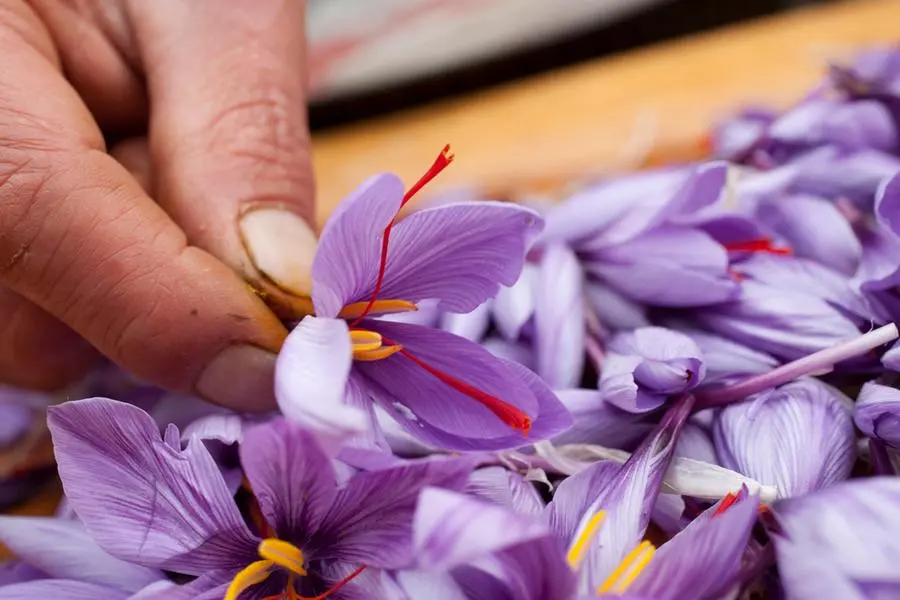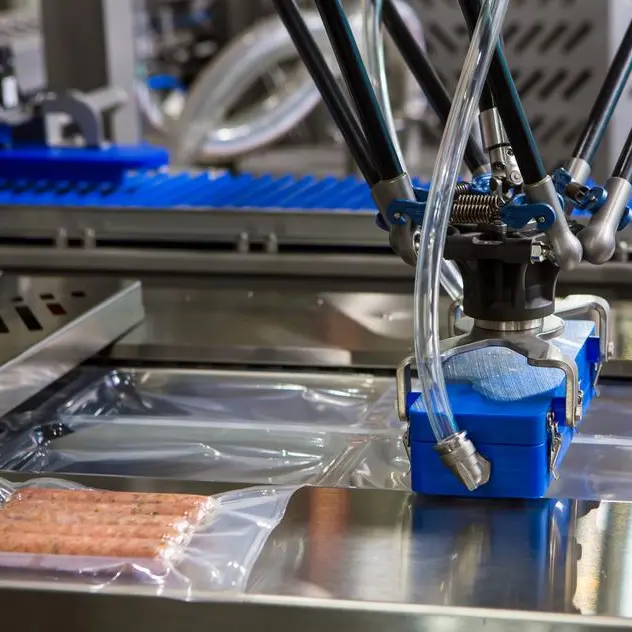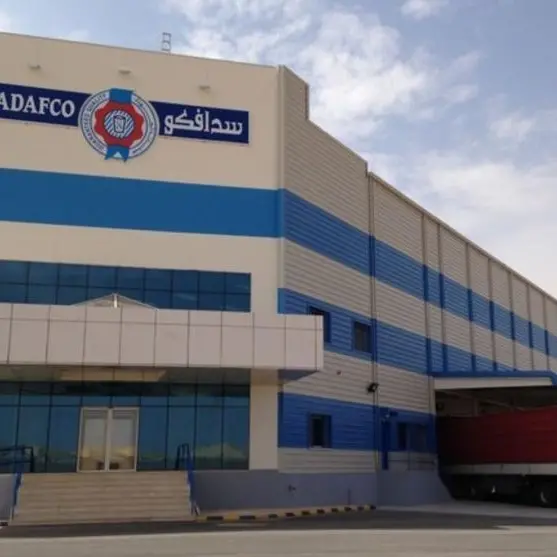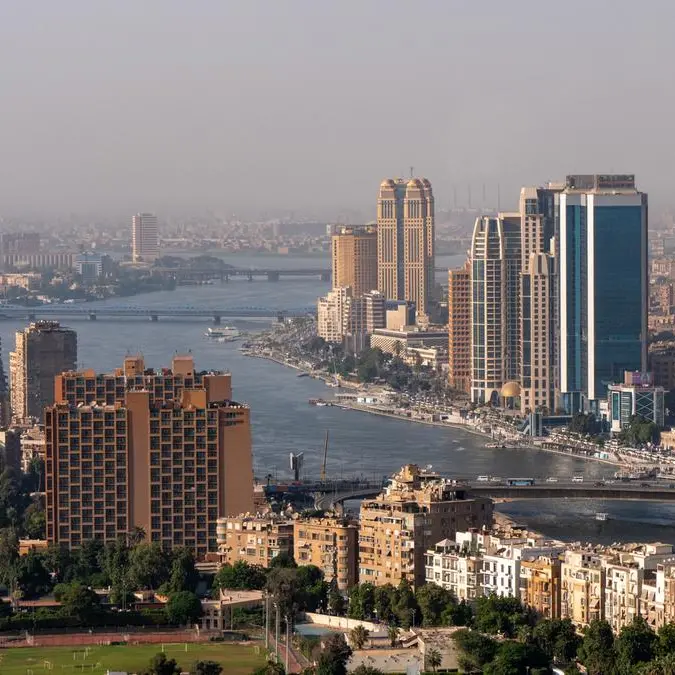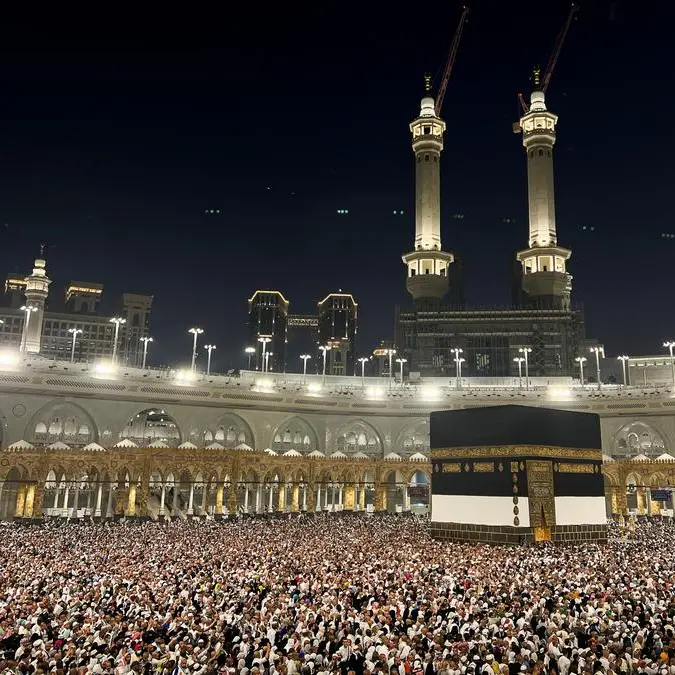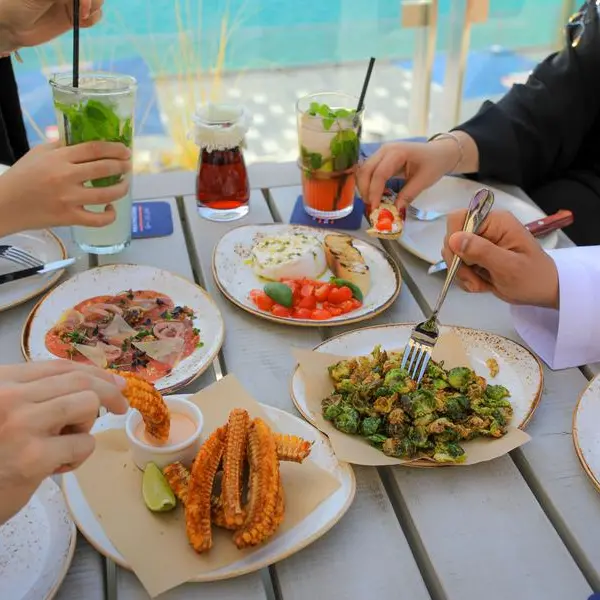PHOTO
Touted as the world’s most expensive spice, growing saffron is considered a tough task to master, requiring cooler temperatures — and to picture that in the middle of a large stretch of desert is akin to watching a paradox come to life.
To find out more, we ventured into a facility in the middle of the Sharjah desert, to visit the Veggitech farm in Al Zubair, where preparations were in full force for the first-ever saffron harvest in the UAE.
“We overtook this farm only last year, in April 2021, when it was basically a barren land, with just one greenhouse,” says Masood Hashim, group CEO, SNASCO Holding — Veggitech’s parent company — while walking us to the control room where saffron corms were being cultivated. “We also have four other farms, one of which is right opposite this facility, and is currently under construction. It will soon be used to grow strawberries.”
Hyper-controlled environment
As we swiftly made our way inside the indoor farm, wrapped in blankets, we were warned by the staff that the temperatures would drop once we went in.
Putting our shoes through the automatic shoe cover dispensers, placed just outside the door, we were ready to deep dive into the world of crocus sativus (also known as saffron crocus) — the purple-coloured flowers through which saffron is obtained.
The temperatures inside dropped to 12 degrees centigrade, which is the optimal night-time temperature required by the saffron corms or ‘bulbs’ to cultivate the flowers. “The daytime temperature can go up to 17-20 degrees centigrade,” mentions Ali Abbasi, one of the senior farm managers in charge of the saffron project.
The beauty of an indoor farm is that it remains unaffected by the external environment. You could be breaking a sweat right outside but as soon as you move on to the other side of the electrical sliding door, you enter a whole other world lit up in red-blue neon lights resulting in a radiant blend of purple-violet hues lighting up a hyper-controlled indoor vertical farm.
“In the indoor vertical farm, we don’t have to worry about the external environment because we build our own environment,” says Abbasi, who’s originally from Abbottabad, Pakistan, and has studied agriculture from a Peshawar university.
Indoor versus traditional farming
With a growing area of 430 sqm (vertically) and ground area of 165 sqm, the staff tells us that around 100 sqm of ground area within this indoor farm is equivalent to 10,000 sqm (or 1 hectare) of traditional farming land, in terms of the number of saffron bulbs that can be accommodated inside.
With three big towers, each one comprising seven layers, there are 5,000 saffron bulbs in this vertical farm that, contrary to traditional farming lands, have no exposure to sunlight, soil or tractors but instead are supported by a smart built-in system with cameras and sensors to carefully monitor the growth factors that need to be maintained within the room.
“Instead of using water, nutrients, a big area of land, soil or media [which in hydroponic systems means substrate of soil, such as perlite or coco peat], we’re solely focusing on controlling the four basic parameters, which can be used to grow premium quality saffron,” says Abbasi.
Fundamental four: Growth parameters
The four basic parameters controlled through Veggitech’s smart built-in system are carbon dioxide levels, light, temperature and relative humidity. “We’ve done research on this for almost two years, to come up with the optimal measurements for these parameters to give us the best results,” he says, adding that this process is called LED light-assisted indoor vertical farming.
While the smart system meticulously controls the four indoor parameters, it still needs a good amount of human supervision, says the farm manager. “We can fix the CO2 levels to 800 PPM for instance, and the system will give us that but we need to also supervise the crops and know when to alter these parameters.”
Moreover, vertical farms across the world are now increasingly turning to robotics to make the process even more seamless. “We used to have robots but it didn’t work well. For such large vertical farms, you have to check the crops with your own experience. And we also have to keep in mind our operational costs and return on investment,” says the farm manager.
Why grow saffron in the UAE?
“There has been a growing demand for saffron in the region,” Abbasi responds. “We thought it would be a great idea to produce it here in the UAE. We grow over 50 crops already so it was a natural extension for us to also start growing saffron.”
With no soil being used to cultivate the saffron bulbs, and in considerably less space, growing saffron in indoor vertical farms is also a viable proposition for commercial purposes.
“The UAE has a harsh climate and also the water for consumption is limited, since it has high levels of total dissolved solvents (TDS). Using the auto machine for reverse osmosis to treat the water and bring its TDS levels down is quite an expensive process, in addition to the cost of importing fertilisers,” he adds.
As the use of soil and water can be avoided in this control room, it makes it a more sustainable method for this part of the world.
Saffron growth cycle
The saffron bulbs used for this project that have been imported from Netherlands were in their dormant stage, when brought to the UAE. Ghazal Shafiee, who’s the quality manager at the farm, explains the growth cycle of saffron in the indoor facility.
“The bulbs come alive around mid-August and from then to November, we keep them in the control room, which is what we see at this stage.” Both red and blue lights are used together, at 800-1200 Lux approx., during this phase, while awaiting the bulbs to sprout into saffron flowers.
Once the flowers begin to sprout is when the harvesting stage commences. This can take place any time from beginning to mid-November. “After harvesting the flowers, we can separate the stigmas (saffron threads) and send it for drying, to preserve its colour and flavour. Each saffron flower gives three stigmas,” she explains.
UAE’s first saffron harvest
As of Saturday, November 6, the first saffron harvesting process began at the Veggitech facility, with a blooming batch of purple saffron crocus shimmering with the deep red-orange stigmas, ready to be harvested.
The quantity of 5,000 kg saffron bulbs at the indoor farm will produce only around 5.5 kg saffron, which is hand-plucked from the flowers, making it a labour-intensive process.
This is also the primary reason why saffron is the most expensive spice in the world. Which is why domestic production of the spice could be a landmark moment for the country.
The propagation method
Following this, the bulbs are shifted to the greenhouse, for the propagation process, which takes around 6-7 months. “Once the harvesting is complete, the propagation method will begin, by moving the bulbs to the greenhouse where we can keep them in the growing media. For this process, we will use the semi hydroponics system, which means we will use soil, mixed with soil substrates along with the drip irrigation system that has all the essential nutrients required for propagation, infused into the water,” explains Abbasi. “By mid-July to mid-August, we will get 8-10 new bulbs from 1 mother bulb.”
The plant reproduces asexually through vegetative propagation. Each saffron corm will produce new bulbs, which is how the plant multiples.
“We choose around 3-4 bulbs with superior quality and transport those back to the indoor vertical farm around mid-August. And these are fully pesticide-free,” Abbasi continues. Next year, they plan on building more than three indoor vertical farms to grow saffron as they will not have to import the bulbs from elsewhere, hence, increasing the overall output.
But how do we know which bulbs are of good quality?
Determining premium grade saffron
As it’s the first saffron harvest in the Mena region, the farm is expecting nothing short of premium grade saffron. “We’re expecting superior quality of saffron,” says Shafiee, who’s a PhD candidate from Iran, currently working for Veggitech’s saffron project .
“When you grow saffron through traditional farming methods, you need to harvest the flowers before sunrise as the key ingredient within the saffron is very sensitive to light, which can ruin its quality,” she adds. However, in a controlled environment, “we can have less light during the harvest time, which will improve the quality of the harvest without having time constraints,” says Shafiee.
If you harvest up to the upper layer of the saffron stigma, it’s called a ‘super negin’ (sargol), just 1-1.5 millimetres below is the ‘negin’ and the part just below that is the 'poshal'. “For premium quality you need to harvest the super negin, which is what we’re hoping to get from this harvest,” explains the quality manager.
The sustainability debate
Future-proofing agriculture through technological means has gained widespread acceptance across the globe but the role it plays in battling the climate crisis still remains uncertain. The world of indoor vertical farming, according to a Guardian article (Namkung, 2022), can either “revolutionise the future of agriculture in a warming world, or is a problematic climate solution due to its high energy costs”.
When asked about the total energy expenditure and related costs, the farm manager explains why they decided to not use solar panels for supplying energy to the farm. “The energy costs associated with solar panels were coming up to 35 to 45 fils approx. per unit of kilowatt. But the electricity costs we currently have are around 0.075 fils per unit, as this land is not in a commercialised area,” says Abbasi.
The farm is located in an area subsidised by the government of Sharjah. Besides, “the land required to grow a large quantity of saffron is still less than what would be required in traditional farming,” argues Abbasi.
National Food Security Strategy 2051
One of the primary benefits of bringing new-age agrotech to the UAE through such initiatives is ensuring food security.
According to Shafiee, precision agriculture and internet of things (IoT) are some of the key developments revolutionising the agriculture sector globally. “Even biotechnology and vertical farming are new tech developments that are causing a huge shift in food production globally, especially in terms of food safety,” says Shafiee.
To ensure food safety and security, it is critical to move past the idea of crops being associated with and limited to certain countries. “We can grow all the different crops in all countries,” argues Shafiee.
“Everybody knows the UAE has a harsh climate, it’s not a country where saffron could grow naturally. We can’t change the climate here, but what we can do is get better technology to create favourable conditions. At the end of the day, that is the point of technology. It allows us to do something we can’t do otherwise,” she adds.
Looking ahead
As the first-ever saffron harvest is underway, there are already a lot of potential buyers expressing their interest in purchasing the homegrown spice. “We have more than 50 clients already. A lot of them are restaurants, five-star and seven-star hotels. Some clients also want to purchase the live bulbs with the stigmas so they can harvest it themselves,” says Abbasi. But with only little over 5 kilos of saffron being harvested, it will have to be utilised in a smart way. “It may not seem like a big quantity but for this area, it’s actually a lot,” he adds.
Once the harvest process comes to conclusion, and the saffron bulbs are shifted to the greenhouse facility for propagation, the indoor space will be used to grow seven different types of exotic mushrooms. Until, of course, it’s time to welcome the next set of live saffron corms, ready to bloom into new bouquets of purple flowers, twinkling with ‘red gold’.
Copyright © 2022 Khaleej Times. All Rights Reserved. Provided by SyndiGate Media Inc. (Syndigate.info).
